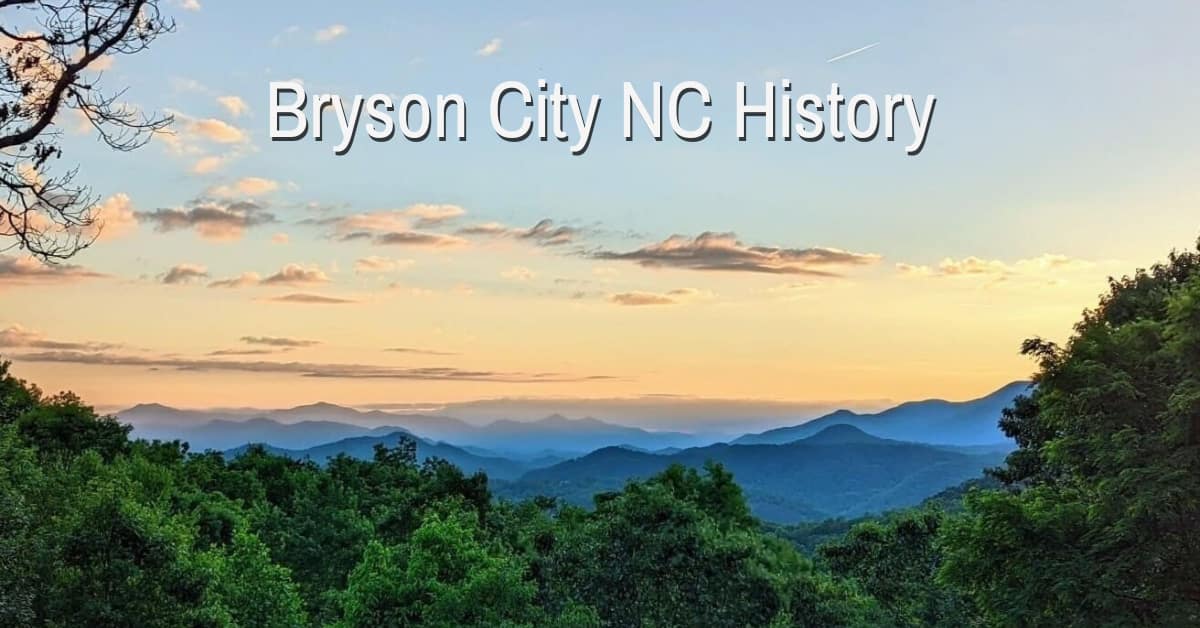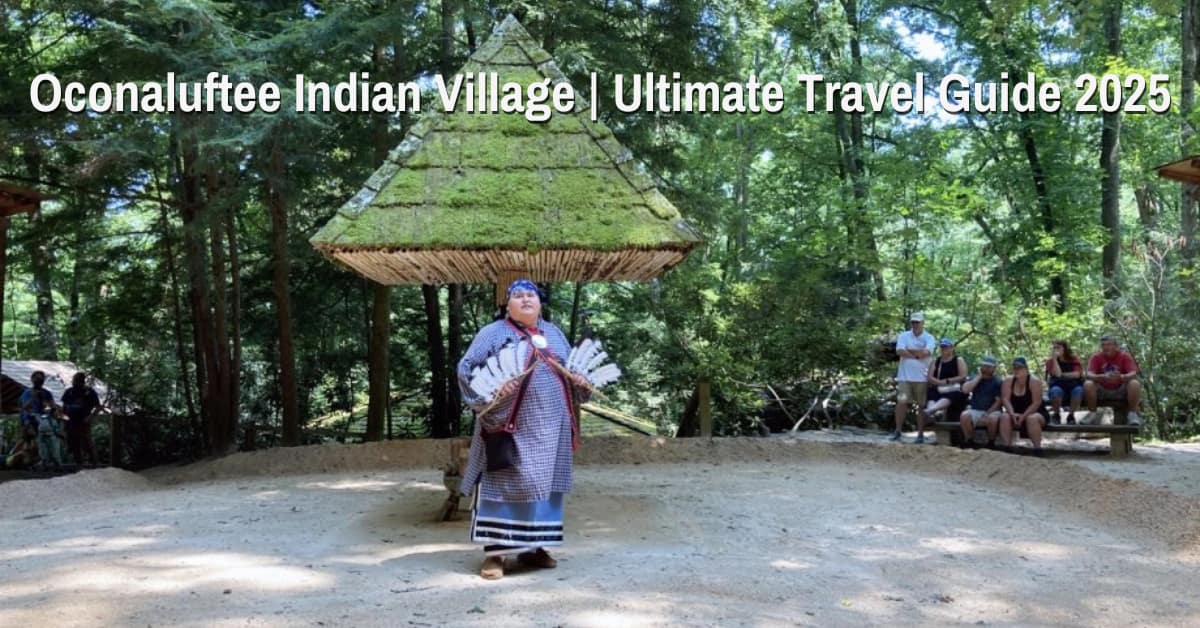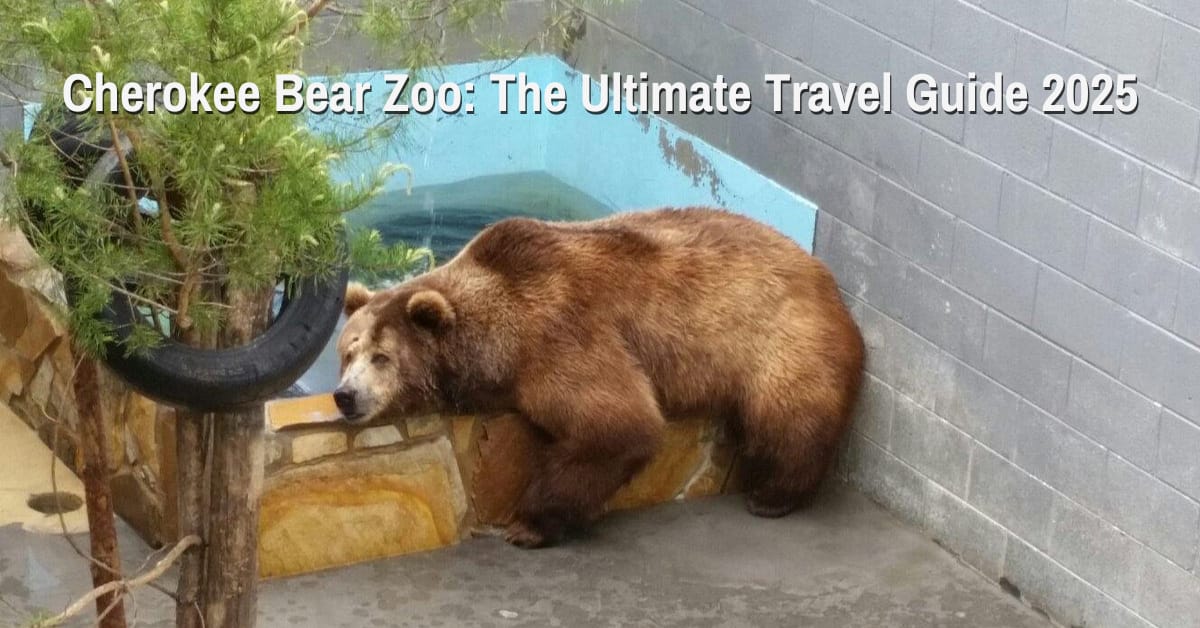Nestled in the Smoky Mountains of North Carolina, Bryson City is a charming mountain town steeped in Bryson City NC history, attracting tourists with its natural beauty, rich heritage, and untold tales.
Bryson City, which was formerly largely a Cherokee stronghold before becoming a center of Appalachian culture and rail travel, enthralls visitors with its unique combination of historical and natural charm.
This town’s distinct appeal makes it a desirable place to explore, particularly for visitors staying at Elkhollow Resort, who may take advantage of a stay enhanced by the region’s historical and contemporary charms.

Early Beginnings: The Cherokee Legacy
Without exploring the Cherokee Nation’s legacy, which has had a lasting impact on the region, Bryson City’s history would be lacking.
Once an important portion of the Cherokee homeland, the area surrounding Bryson City was referred to as Kituwah, or “Mother Town.”
There was a flourishing Cherokee community in this region, and they followed customs firmly anchored in balance and reverence for the natural world.
In addition to providing food, the Great Smoky Mountains gave them a spiritual link to the outside world.
These mountains were considered sacred by the Cherokees, who frequently honored nature, animals, and seasons via rites and rituals as part of their spiritual traditions.
The Trail of Tears Cherokees
The Trail of Tears, a forced relocation, was one of the Cherokee people’s saddest periods in the 1830s.
Thousands of Cherokee people were forced to leave their homeland and march westward to what is now Oklahoma as part of the Indian Removal Act.
The Cherokee people were permanently altered by this sad event, which resulted in significant losses in terms of both lives lost and ties to their ancient territory.
Some Cherokee families, however, hid in the thick forests that surrounded Bryson City and refused to be removed. Eventually, these tenacious clans joined the Eastern Band of Cherokee Indians, a federally recognized tribe that has defied all odds to maintain its culture, language, and customs.
Cherokee Customs and Famous Locations Today
Through a variety of locations and cultural activities, Bryson City proudly displays its Cherokee heritage today.
With realistic reconstructions of a Cherokee town from the 1700s, the neighboring Oconaluftee Indian town in Cherokee, North Carolina, provides guests with an insight into traditional Cherokee life.
This living history museum offers an authentic cultural experience by showcasing Cherokee ceremonies, crafts, and dances.
The Founding of Bryson City: From Settlement to Scenic Town
Bryson City was established in the 19th century and was first called Charleston, which is not to be confused with Charleston, South Carolina.
After being formally established as a municipality in 1889, it was subsequently renamed “Bryson City” in recognition of Colonel Thaddeus Dillard Bryson, a prominent local leader who was instrumental in its growth.
Due to its strategic location along the Tuckasegee River in western North Carolina and its proximity to the Great Smoky Mountains, the city naturally drew residents for trade, agriculture, and eventually tourism.
Progress Over Time
Early on, Bryson City served as a center for sectors like agriculture and lumber. The town had significant growth as a result of the railroad’s expansion in the late 1800s, which attracted more inhabitants and tourists to the region.
The railroad’s entrance not only increased commerce but also opened up Bryson City to tourists, laying the groundwork for its future growth as a travel destination.
In order to entice adventurers to its rivers, forests, and mountains, Bryson City embraced its picturesque surroundings by the 20th century and started to build tourism-focused services and attractions, ranging from historical landmarks to outdoor sports.
The Railroad Era: Transforming Bryson City’s Landscape
Bryson City’s development was accelerated by the Western North Carolina Railroad’s entrance in the late 1800s.
It emerged as a major hub for products and passengers passing through the Smoky Mountains. Thanks to the railroad, travelers seeking picturesque experiences could access the region.
Reviving a portion of Bryson City’s past, the Great Smoky Mountains Railroad is now a tourist destination that provides picturesque mountain rides.
It was once necessary for trade and travel, but today it allows tourists to get a personal look at the area’s natural beauty and rich history.
Moonshine and Mountain Legends
Like many Appalachian communities, Bryson City became a hub for moonshining during the Prohibition era.
The desire for handmade spirits created a booming, if covert, industry and the mountainous terrain made it possible to hide stills.
Because of its secluded location, the area has a rich culture of fascinating mountain legends and folklore. The town’s history is intertwined with folklore, stories of haunted woods, and fabled moonshiners, which give it a sense of mystery and appeal for daring tourists.
The Great Smoky Mountains National Park: A Gateway to Adventure
Nature lovers and outdoor explorers alike go to Bryson City, which serves as a gateway to the Great Smoky Mountains National Park.
The park’s creation guaranteed Bryson City’s position as a center for outdoor tourism by increasing local awareness and stimulating the economy.
Bryson City, also referred to as the “Gateway to the Smokies,” is an ideal starting point for discovering the park’s magnificent scenery, trails, and fauna. Tourists are still drawn to the park because they want to take in the breathtaking scenery that has made this area famous.
Historical Landmarks Around Bryson City
The objects, images, and displays in this museum chronicle the development of Bryson City from its earliest years to the railroad boom and beyond.
For those who wish to learn more about the history of the area, it is an essential stop.
The train terminal, which is still in use and the beginning point of picturesque railroad trips, is a reminder of Bryson City’s railroad past.
Strolling about the depot, visitors can take in the architecture and picture the busy times of its history.
5 Interesting Facts You Probably Never Knew
Bryson City is a quaint hamlet with a rich Appalachian tradition, distinctive biodiversity, and an interesting past that is tucked away in North Carolina’s Great Smoky Mountains.
Here are a few interesting and little-known Bryson City facts:
Hub for Appalachian Craftsmanship
- The preservation of traditional Appalachian crafts was significantly aided by Bryson City. Quilting, wood carving, and basketry have a long history in the region.
- Many of these crafts were originally made for daily use, and some craftspeople continue to employ methods that have been passed down through the generations within their families.
Cherokee ancestry
The territory on which Bryson City is situated was formerly a part of the Cherokee Nation.
- The Eastern Band of Cherokee Indians had one of their first towns in this area, which they called “Kituwah.”
- A living history experience of traditional Cherokee culture, crafts, and language may be found in the adjacent Oconaluftee Indian Village.
The “Capital of Salamanders”
Because of the amazing diversity of salamander species that may be found here, Bryson City is frequently referred to as the “Salamander Capital of the World.”
- With more than 30 species flourishing in the Great Smoky Mountains, the area is a hotspot for these amphibians due to its cold, wet woodland environment.
One of the Eastern United States’ Rainiest Locations
The Great Smoky Mountains are among the wettest regions in the eastern United States, receiving between 55 and 85 inches of precipitation every year.
- The area is a stunning year-round location that is perfect for hikers and photographers both because of the abundant streams and lush greenery created by this rain.
Fontana Dam: A marvel of engineering
Fontana Dam, the tallest dam in the eastern United States at 480 feet, is located just outside Bryson City.
- It was a vital component of the Tennessee Valley Authority’s efforts to supply energy for the manufacture of aluminum and other wartime requirements when it was finished during World War II.
One of the Last Old-Growth Forests in the Area
Some of the few surviving old-growth areas in the United States can be found in the forests of Bryson City.
- On paths like the Deep Creek Trail, you may view these old trees, some of which are hundreds of years old.
- For animals like black bears and some birds, which flourish in mature woods, the trees offer essential habitat.
Unique Plants: Rhododendrons and Flame Azaleas
The temperature and elevation of Bryson City encourage a remarkable variety of wildflowers, including as rhododendrons and flaming azaleas.
- These colorful blooms cover the mountains every spring and summer, attracting photographers and nature enthusiasts from all over.
The renowned Whitewater Rapids
Kayakers and rafters from all over the world go to the famous whitewater destination, the Nantahala River in Bryson City.
- Numerous Olympic kayakers have trained on the river, which is well-known for its exhilarating rapids and has even played home to international contests.
Trains and Smoky Mountain Railroad Tunnels
In the early 1900s, the Bryson City-based Great Smoky Mountains Railroad was built primarily for the transportation of lumber.
- With its antique tunnels and bridges, it is now a picturesque train line that provides breathtaking views of the surrounding rivers and mountains.
Bryson City Today: Blending History with Modern-Day Adventure
Bryson City offers a range of contemporary conveniences while preserving its historic character. The streets are lined with charming stores, galleries, and eateries, creating the ideal fusion of modern conveniences and vintage charm.
The rich history and Appalachian culture of Bryson City are celebrated annually via events like the Smoky Mountain Folk Festival and neighborhood farmers’ markets.
Along with locally produced food, crafts, and music, visitors may get a flavor of this rich tradition.
Planning Your Historical Stay at Elkhollow Resort
There are countless options for visitors to Elkhollow Resort to experience Bryson City’s beauty and heritage.
The resort provides well-chosen guides and recommendations for discovering the area’s beautiful and historical riches through trails, seasonal activities, and visits to neighboring locations.
For history buffs, local tour companies provide guided trips via natural wonders and ancient places.
Employees at Elkhollow Resort may help visitors arrange trips to neighboring train stations, museums, and even workshops that showcase traditional Appalachian crafts.
Conclusion | Bryson City NC History
The allure of Bryson City is its harmonious fusion of local culture, history, and scenic beauty.
The town’s picturesque surroundings and rich history continue to captivate tourists who come to take in the Smoky Mountains, partake in regional customs, and experience mountain life.
The ideal starting point for discovering Bryson City’s timeless charm, where adventure and history abound, is a stay at Elkhollow Resort.
Bryson City NC History FAQs
What is the historical significance of Bryson City?
Bryson City holds a rich history, initially part of the Cherokee homeland, known as Kituwah or “Mother Town.” It played an important role in the region’s cultural and economic development, especially during the railroad boom in the late 1800s. The town today celebrates its heritage with landmarks, museums, and nearby Cherokee cultural sites.
What are the Cherokee traditions in the Bryson City area?
The Cherokee people have a deep cultural connection to the Smoky Mountains, viewing the land as sacred. Today, visitors can experience Cherokee traditions at the Oconaluftee Indian Village, which showcases authentic ceremonies, crafts, and dances, preserving the rich heritage of the Eastern Band of Cherokee Indians.
What is the Trail of Tears, and how does it relate to Bryson City?
The Trail of Tears refers to the forced relocation of Cherokee people in the 1830s, resulting in a tragic loss of life and displacement. Some Cherokee families hid in the mountains around Bryson City and later became part of the Eastern Band of Cherokee Indians, which has preserved their culture and language to this day.
What are the best historical sites to visit in Bryson City?
Key historical sites in Bryson City include the Great Smoky Mountains Railroad, the Bryson City Depot, and the nearby Fontana Dam. The town also offers a variety of museums and landmarks, perfect for those interested in learning more about the region’s history.
Why is Bryson City known as the “Salamander Capital of the World”?
Bryson City has earned the title due to its exceptional biodiversity, particularly in salamanders. The region is home to more than 30 species of these amphibians, making it a hotspot for nature enthusiasts and photographers.
What can I do in the Great Smoky Mountains National Park from Bryson City?
Bryson City is the gateway to the Great Smoky Mountains National Park, where visitors can enjoy hiking, wildlife watching, and scenic drives. Popular trails, including the Deep Creek Trail, offer stunning views and the chance to experience one of the last old-growth forests in the United States.
What are some fun facts about Bryson City?
Bryson City is also known for its history of moonshine production during Prohibition, its rich Appalachian craftsmanship, and the famous whitewater rapids on the Nantahala River, a popular destination for kayakers and rafters.
How can I explore Bryson City’s history during my stay at Elkhollow Resort?
Elkhollow Resort provides guests with expert guides and recommendations for exploring Bryson City’s historical landmarks, including visits to nearby museums, train stations, and traditional Appalachian craft workshops.
What events celebrate Bryson City’s culture and history?
Bryson City celebrates its Appalachian roots with events like the Smoky Mountain Folk Festival, local farmers’ markets, and seasonal festivals that highlight the area’s music, food, and crafts.
What outdoor activities can I enjoy in Bryson City?
Aside from historical exploration, Bryson City offers numerous outdoor activities like hiking in the Great Smoky Mountains, fishing in local rivers, and whitewater rafting on the Nantahala River, making it an ideal destination for adventure seekers.




